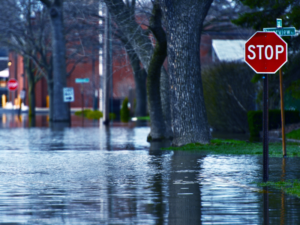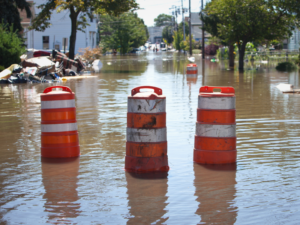 Here in New Orleans, we are known for many great things- our music, culture, food, festivals, art amongst others. However, one thing that we are cautiously famous for, is New Orleans flooding. Flooding can happen year round in the area, but historically June, July and August are infamous for being the months we need to be on alert, as flooding may happen. The good news is that, when there is a risk of flooding, weather alerts are issued so we usually have somewhat of a warning.
Here in New Orleans, we are known for many great things- our music, culture, food, festivals, art amongst others. However, one thing that we are cautiously famous for, is New Orleans flooding. Flooding can happen year round in the area, but historically June, July and August are infamous for being the months we need to be on alert, as flooding may happen. The good news is that, when there is a risk of flooding, weather alerts are issued so we usually have somewhat of a warning.
Warnings include:
Flash Flood Watch: Flash flood is possible.
Flash Flood Warning: Flash flooding is imminent. Meaning, it’s happening now or about to happen so be prepared.
Coastal Flood Watch: Moderate to major coastal flooding is is possible (areas outside levees)
Coastal Flood Warning: Moderate to major flooding is happening now or about to happen so be prepared.
Preparing your home and property for a storm can help reduce the chances for potential damage.
Understand your flood risk. Climate and the features of the land in our area, as well as elevation make flooding a real issue here in the Greater New Orleans area. Additional flood information, relevant to your location, can be found on the FEMA Website or the LSU Ag Center’s Flood Map Tool.
 Insure your property. Flood damage can be very costly and getting work done after the fact, can take a while. Floods are our most common natural disaster in this area so it’s important that homeowners have the appropriate coverage. Something important to remember is that homeowners and renters insurance don’t typically cover flood damage. Flood insurance usually takes about 30 days to take effect, so consider the timeline when you make your purchase.
Insure your property. Flood damage can be very costly and getting work done after the fact, can take a while. Floods are our most common natural disaster in this area so it’s important that homeowners have the appropriate coverage. Something important to remember is that homeowners and renters insurance don’t typically cover flood damage. Flood insurance usually takes about 30 days to take effect, so consider the timeline when you make your purchase.
Clean your property and streets around your home. Remove excess debris from gutters and downspouts. Make sure your catch basins are free of debris. Prune your trees and shrubs regularly. If a flood watch goes into effect, make sure outside furniture, playsets, trampolines are either disassembled or stored away in a safe place. Secure any outside garbage bins. Move possessions to the highest floor of your home, or even your attic. Photograph your property on a non-flood day so that you will have the photos for reference after the flood.
DURING AN ACTIVE FLOOD, THERE ARE ALSO A FEW THINGS TO KEEP IN MIND.
Avoid flood waters. Driving and walking through flooded areas can be very dangerous, even life threatening. Move to higher ground. If your car starts flooding, abandon the car immediately.
Report flooding. Call 911 to report street flooding or any life threatening emergencies. You can always view a map of reported streets that are flooded here.
Move vehicles to higher ground. During a flood, the city of New Orleans often suspends parking restrictions on neutral ground and sidewalks. Now, if you’re not from here, you may be wondering “What is the neutral ground?” The “neutral ground” is a strip of land running through the middle of a two-way street, most commonly known to other American cities as a median. This allows for more parking in higher areas. Unless otherwise communicated, parking restrictions usually go back into law about 2 hours after the flooding ends. A couple of things to remember, should you need to move your car to higher ground:
Don’t block streetcar tracks.
Don’t park in intersections.
Don’t park on top of tree roots or under low branches. This helps ensure your safety as well as the safety of our trees.
Drive slowly! Please avoid pushing water into other people’s homes or damaging yards and property.
After a flood, remember, don’t return home until the authorities deem it safe to do so. Be aware of debris that floodwaters have left behind. Keep in mind that floodwaters can recede roadways and bridges, as well as walkways. Steer clear of standing waters, these can contain downed power lines or even be charged from underground lines that you can’t see. Photograph any damage to your property for insurance purposes.
Building a new home? Build to minimize flood damage! As you go through the building process, here are a few things to consider. Think about elevating your home. The higher the home, the less likely waters are to encroach your walls, doors, or windows. Install a green infrastructure. This can help slow down and absorb rainwater. Elevate your air conditioning unit, generators, and any other outdoor utilities. Read more about mitigation options here.
If you do flood, and need help, remember that at Anne Warren Homes, we have a trusted network of professionals who can help you get through the process. From home shoring companies, hazard clean up, electricians, landscapers, carpet cleaners, you name it- we can put you in touch with someone willing to help.

Leave a Reply